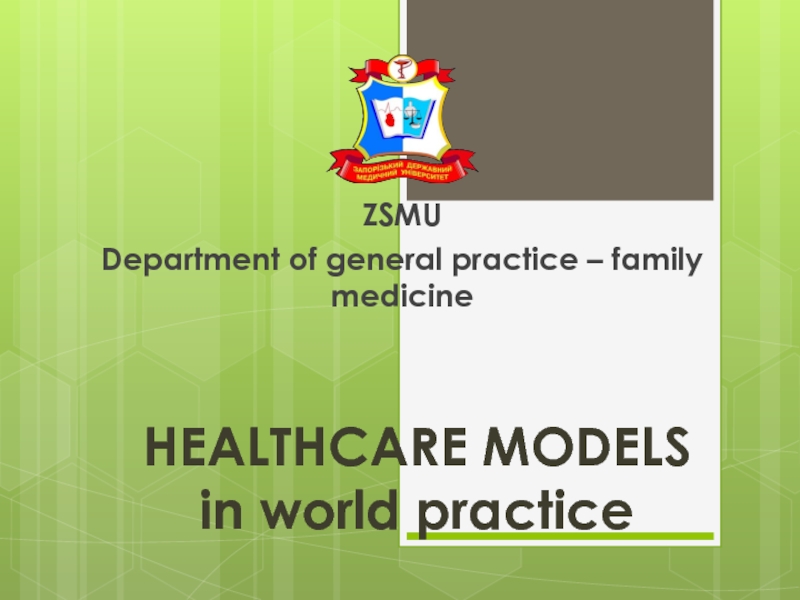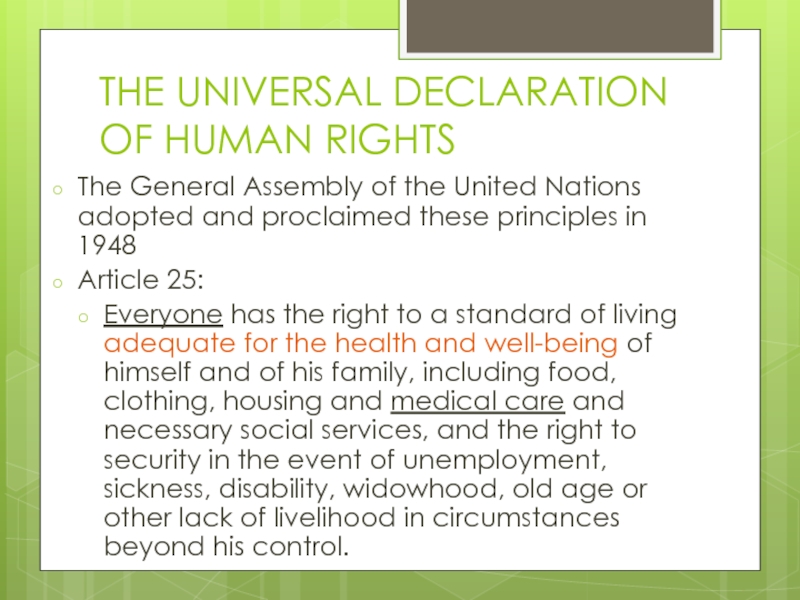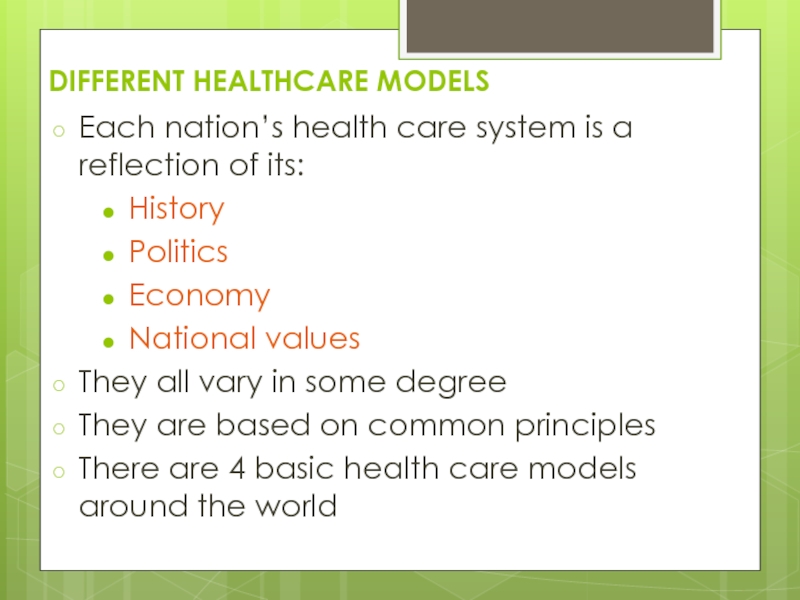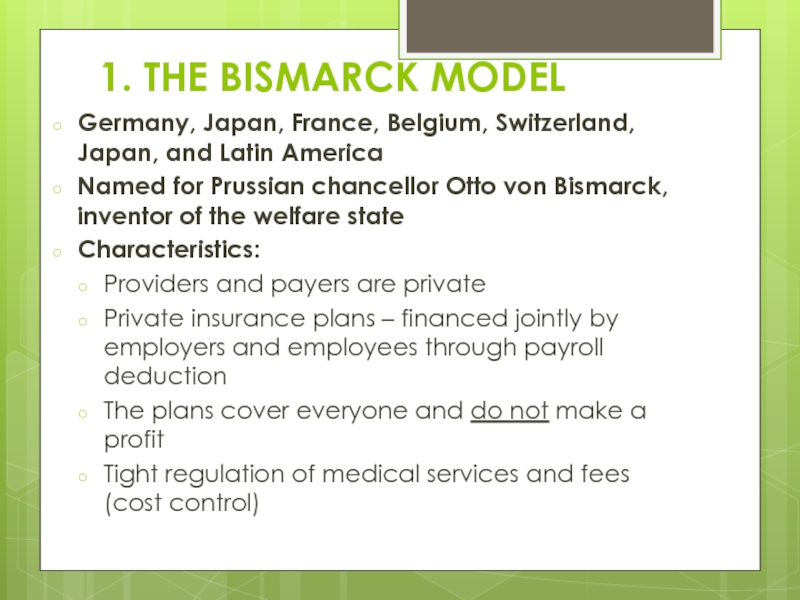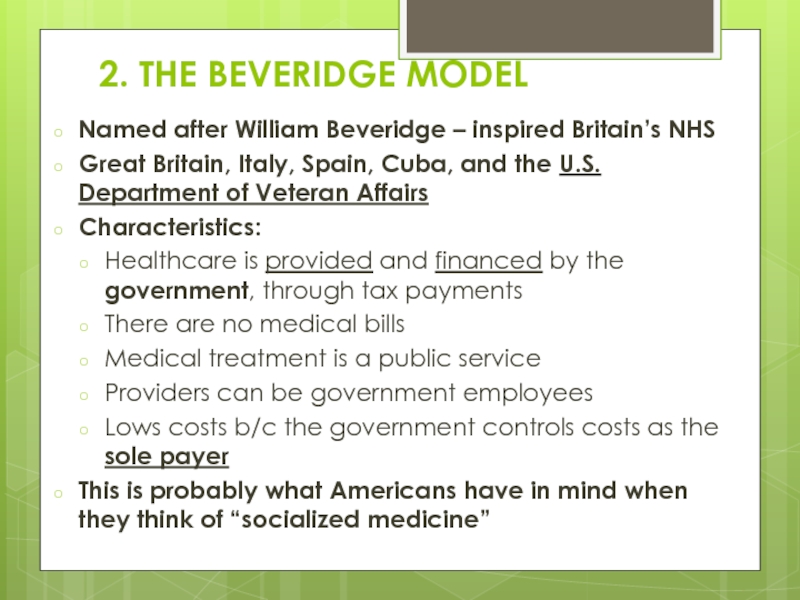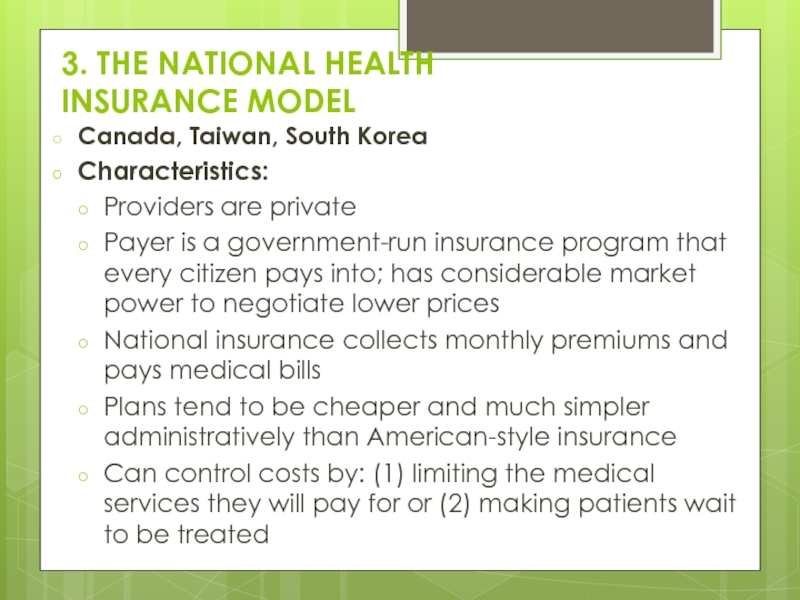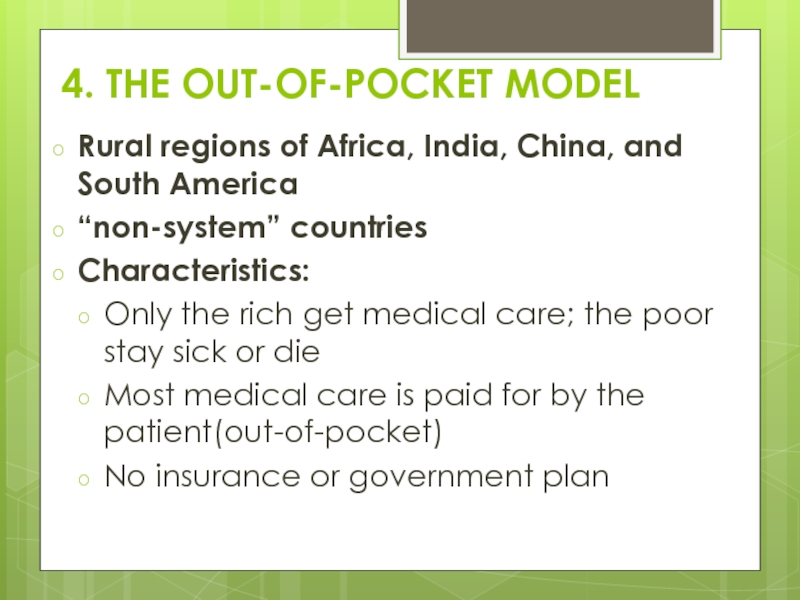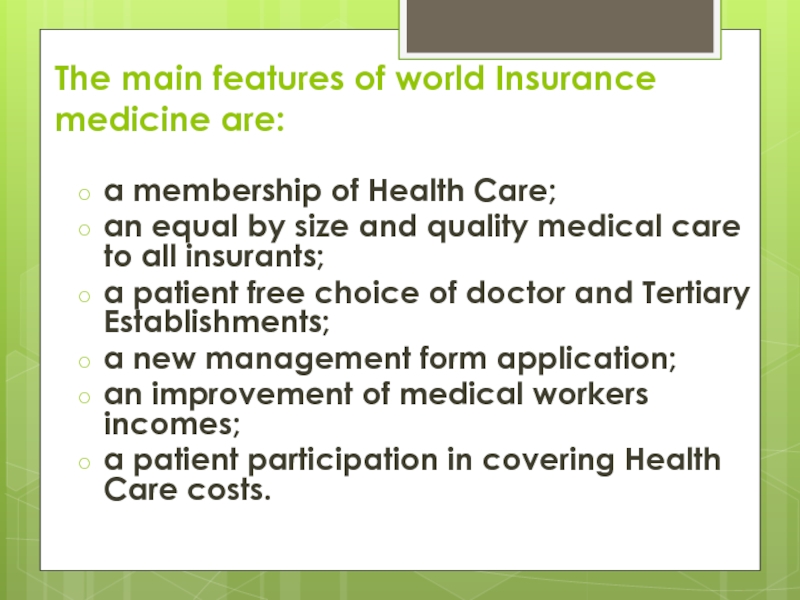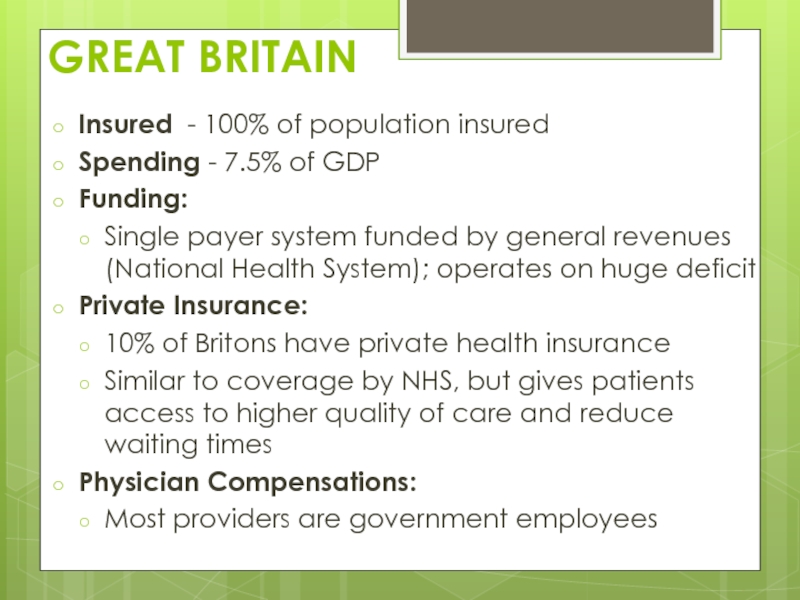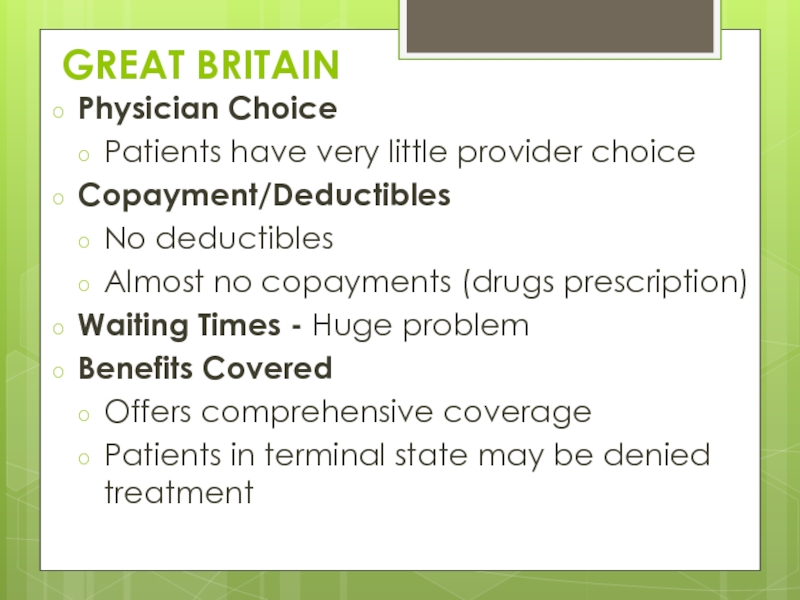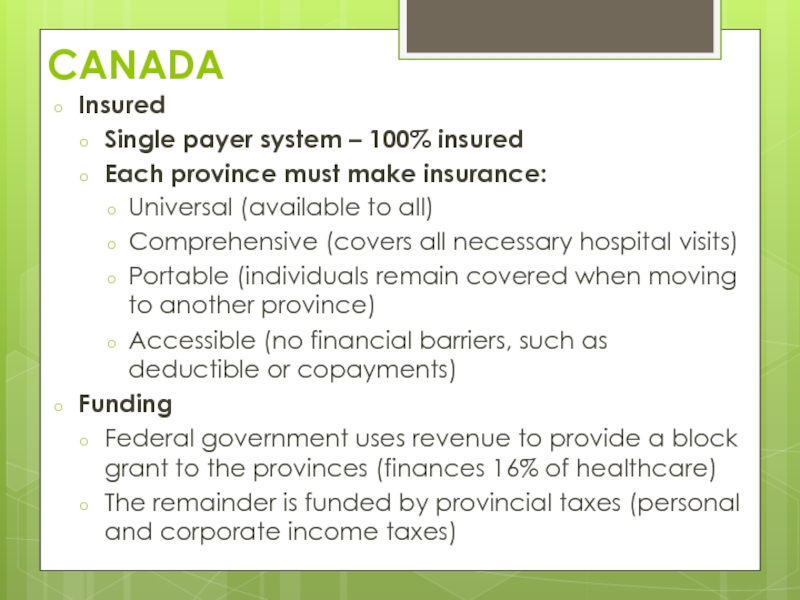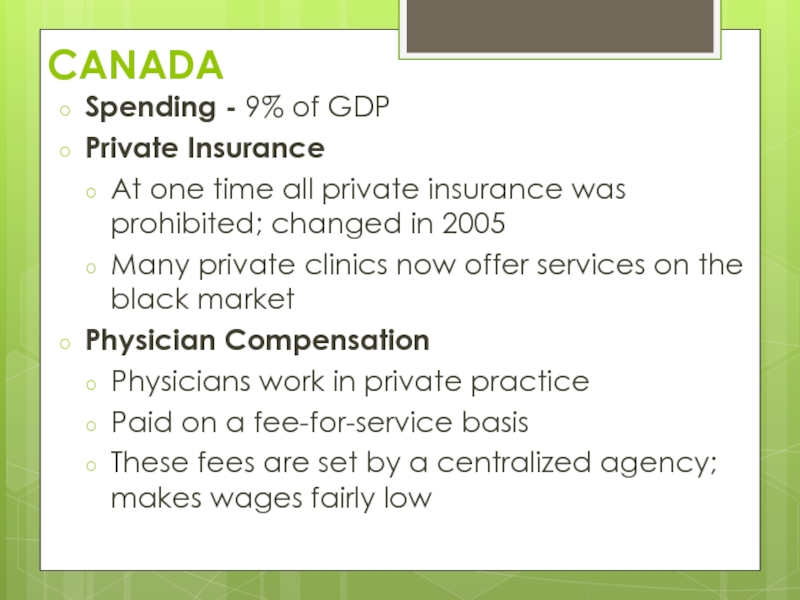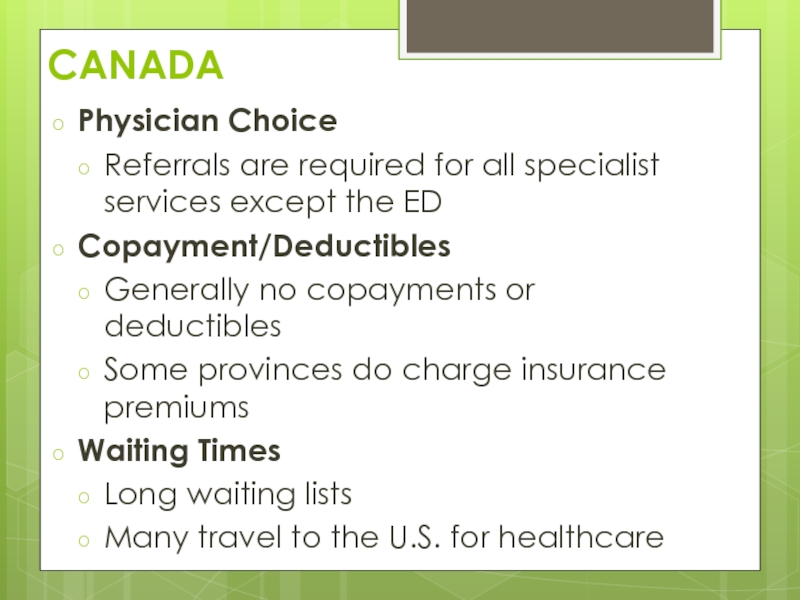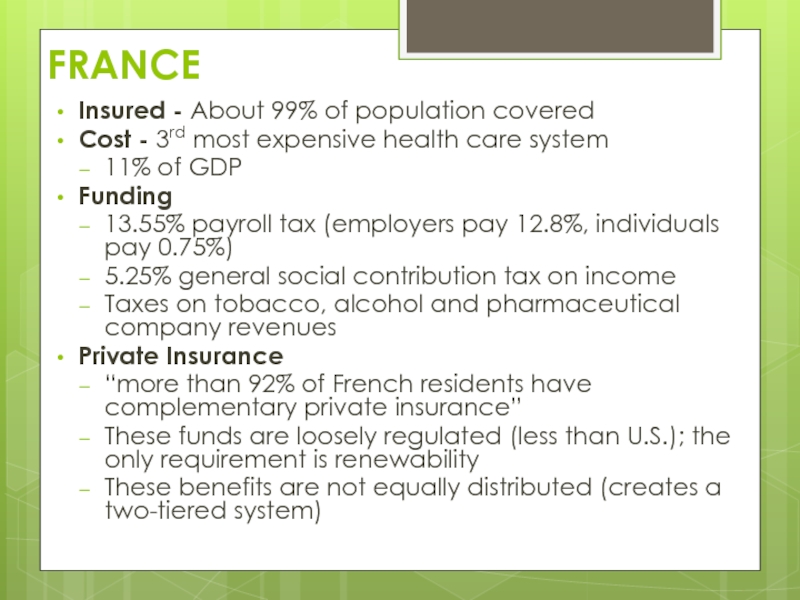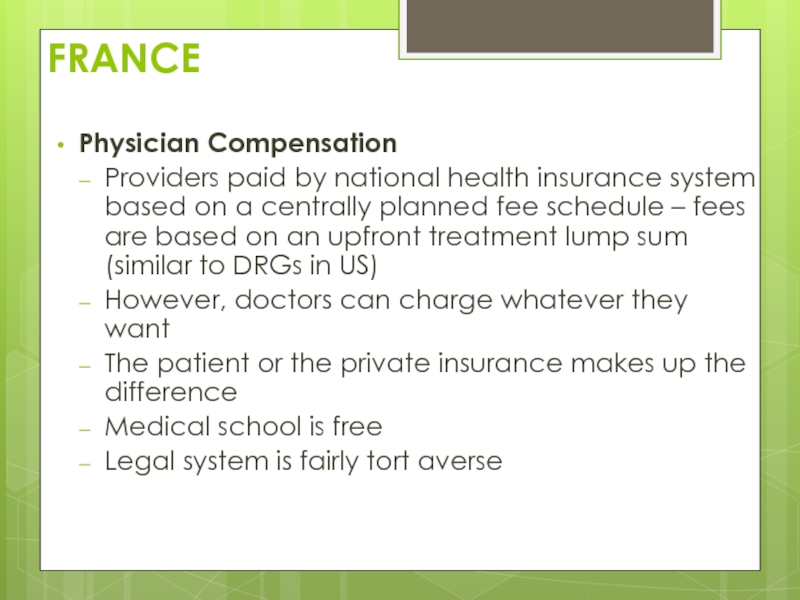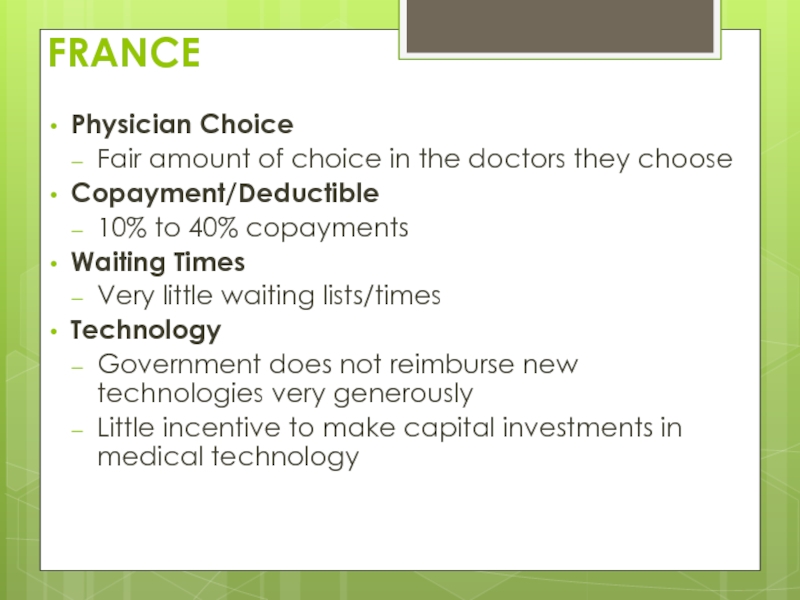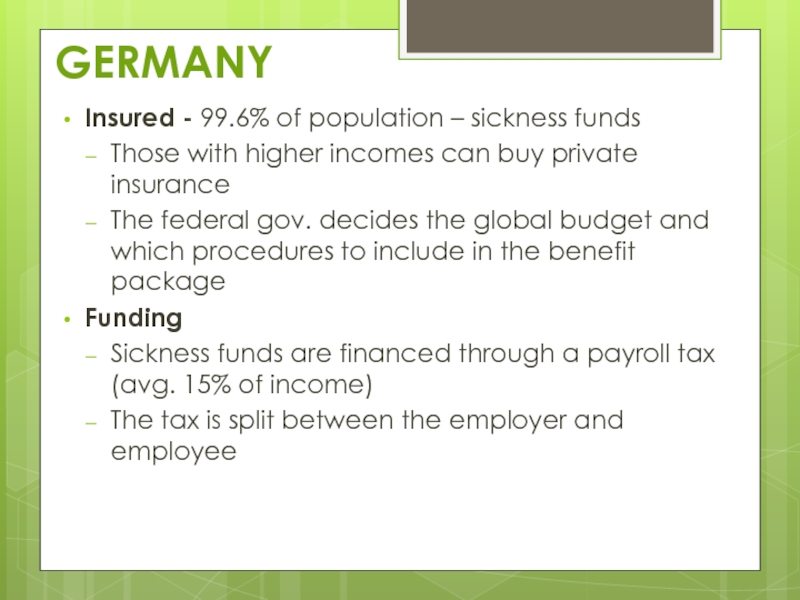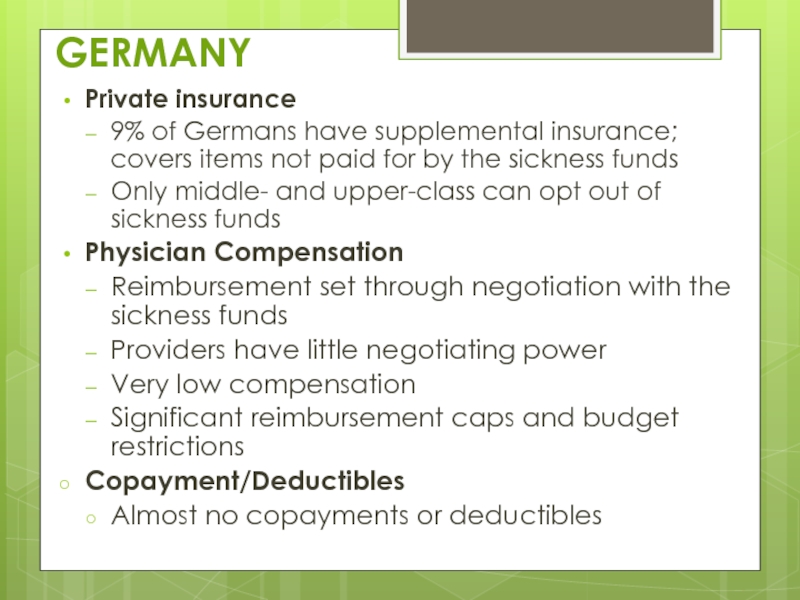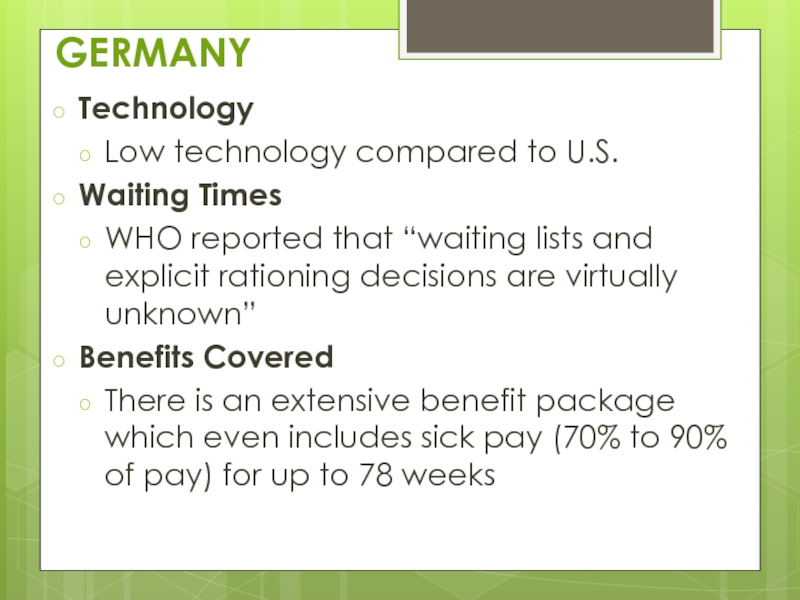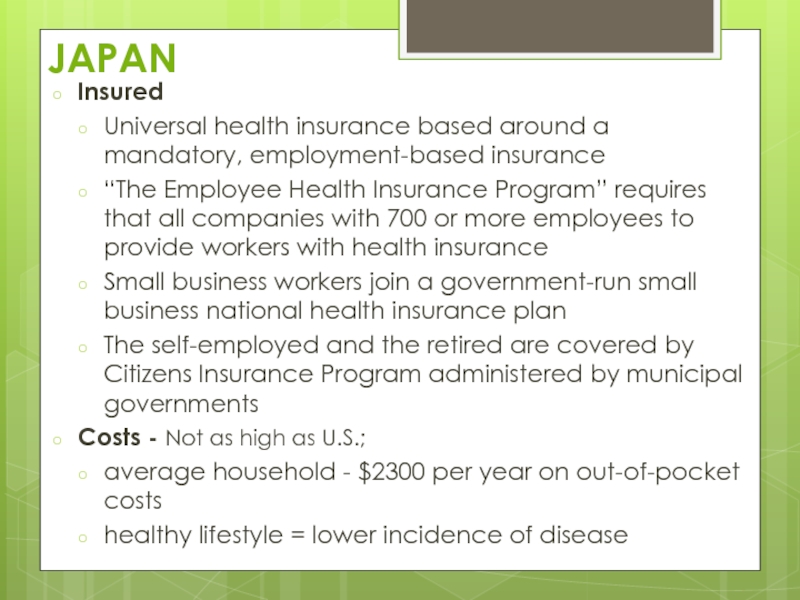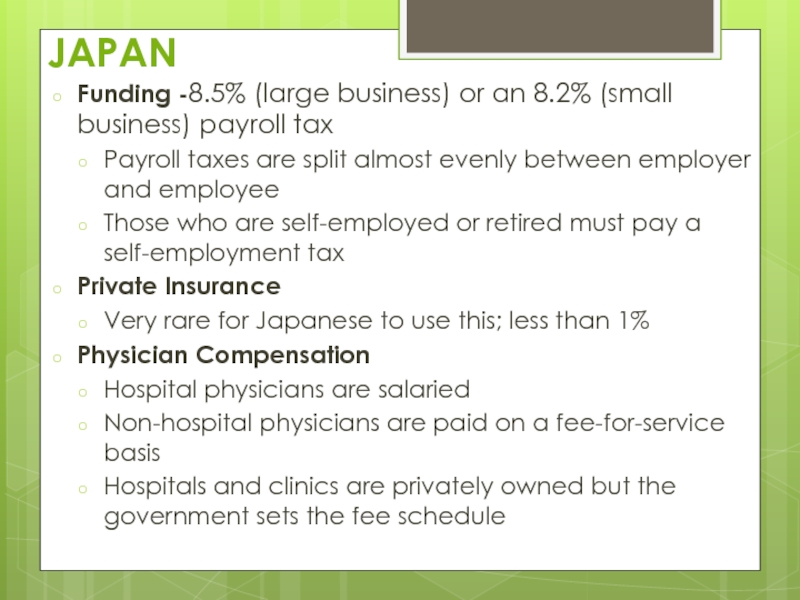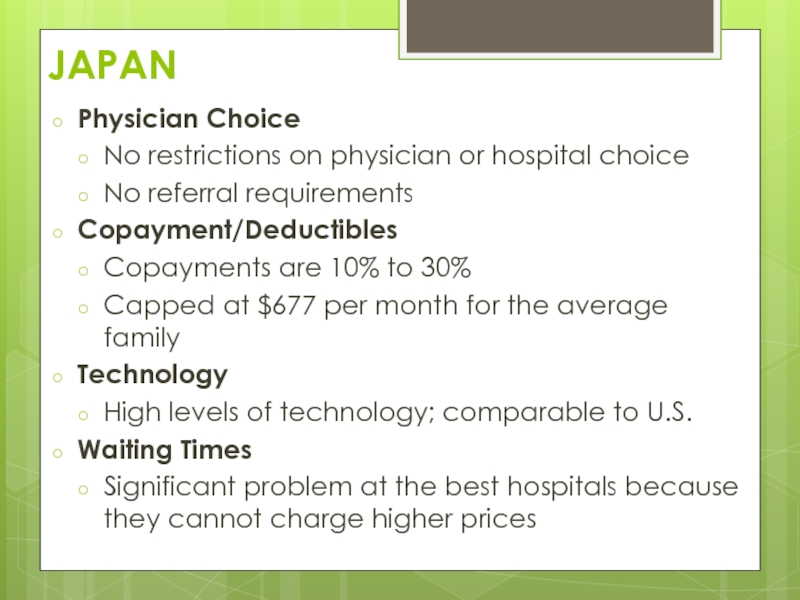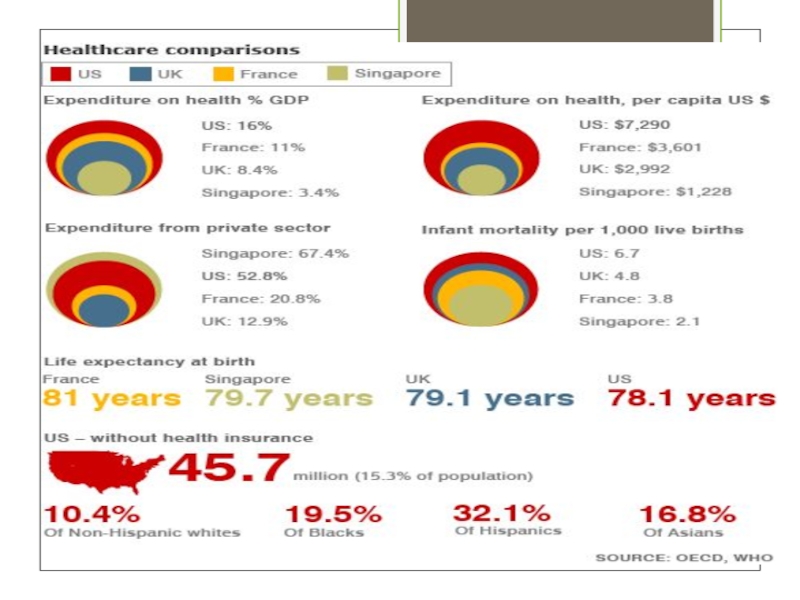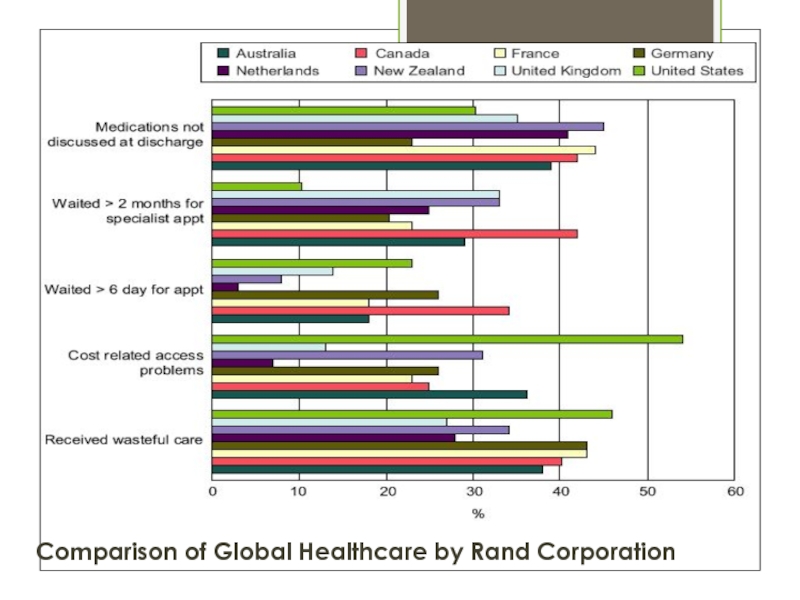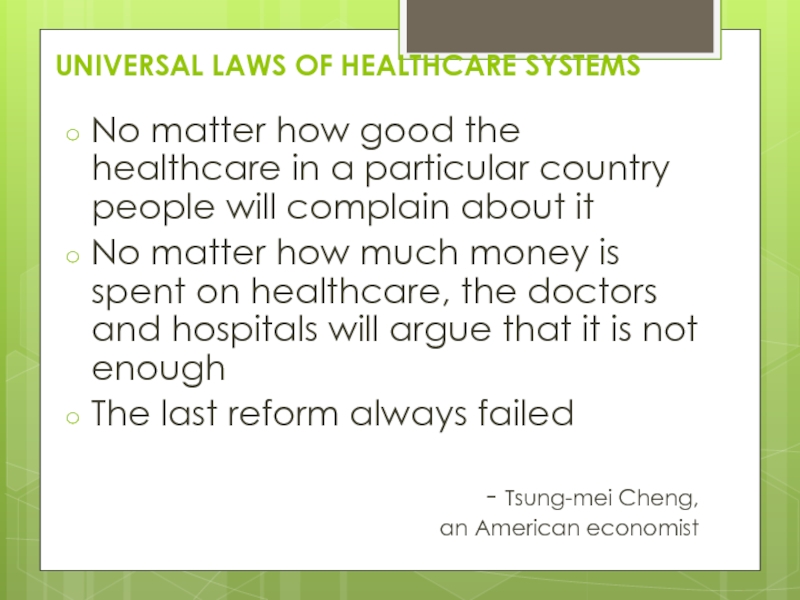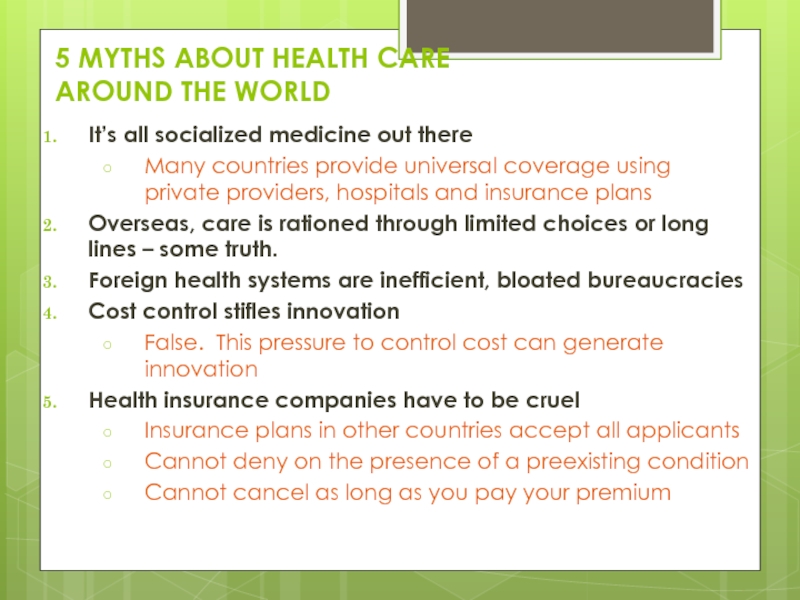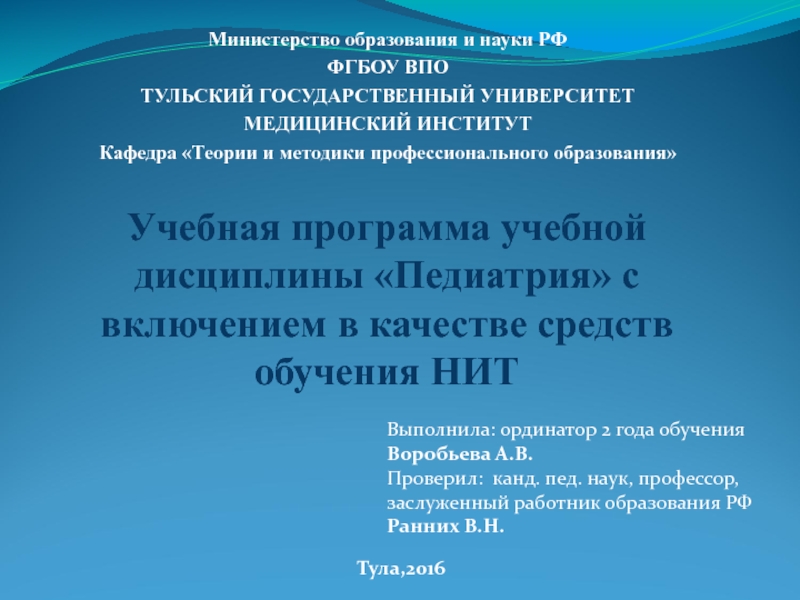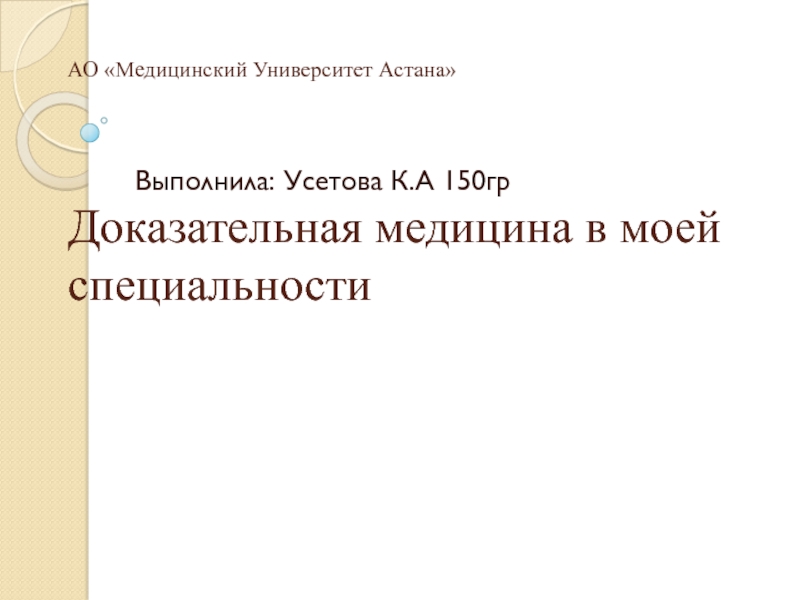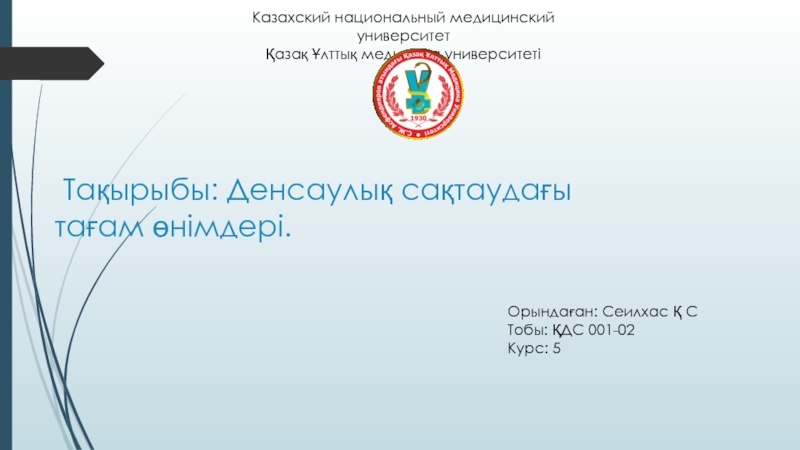medicine
- Главная
- Разное
- Дизайн
- Бизнес и предпринимательство
- Аналитика
- Образование
- Развлечения
- Красота и здоровье
- Финансы
- Государство
- Путешествия
- Спорт
- Недвижимость
- Армия
- Графика
- Культурология
- Еда и кулинария
- Лингвистика
- Английский язык
- Астрономия
- Алгебра
- Биология
- География
- Детские презентации
- Информатика
- История
- Литература
- Маркетинг
- Математика
- Медицина
- Менеджмент
- Музыка
- МХК
- Немецкий язык
- ОБЖ
- Обществознание
- Окружающий мир
- Педагогика
- Русский язык
- Технология
- Физика
- Философия
- Химия
- Шаблоны, картинки для презентаций
- Экология
- Экономика
- Юриспруденция
Healthcare models in world practice презентация
Содержание
- 1. Healthcare models in world practice
- 2. THE UNIVERSAL DECLARATION OF HUMAN RIGHTS The
- 3. DIFFERENT HEALTHCARE MODELS Each nation’s health care
- 4. 1. THE BISMARCK MODEL Germany, Japan, France,
- 5. 2. THE BEVERIDGE MODEL Named after William
- 6. 3. THE NATIONAL HEALTH INSURANCE MODEL
- 7. 4. THE OUT-OF-POCKET MODEL Rural regions of
- 8. The main features of world Insurance medicine
- 9. GREAT BRITAIN Insured - 100% of population
- 10. GREAT BRITAIN Physician Choice Patients have
- 11. CANADA Insured Single payer system – 100%
- 12. CANADA Spending - 9% of GDP Private
- 13. CANADA Physician Choice Referrals are required for
- 14. FRANCE Insured - About 99% of population
- 15. FRANCE Physician Compensation Providers paid by national
- 16. FRANCE Physician Choice Fair amount of choice
- 17. GERMANY Insured - 99.6% of population –
- 18. GERMANY Private insurance 9% of Germans have
- 19. GERMANY Technology Low technology compared to U.S.
- 20. JAPAN Insured Universal health insurance based around
- 21. JAPAN Funding -8.5% (large business) or an
- 22. JAPAN Physician Choice No restrictions on physician
- 24. Comparison of Global Healthcare by Rand Corporation
- 25. UNIVERSAL LAWS OF HEALTHCARE SYSTEMS No matter
- 26. 5 MYTHS ABOUT HEALTH CARE AROUND THE
- 27. “Life is not about waiting for the
- 28. Thank You!
Слайд 2THE UNIVERSAL DECLARATION OF HUMAN RIGHTS
The General Assembly of the United
Nations adopted and proclaimed these principles in 1948
Article 25:
Everyone has the right to a standard of living adequate for the health and well-being of himself and of his family, including food, clothing, housing and medical care and necessary social services, and the right to security in the event of unemployment, sickness, disability, widowhood, old age or other lack of livelihood in circumstances beyond his control.
Article 25:
Everyone has the right to a standard of living adequate for the health and well-being of himself and of his family, including food, clothing, housing and medical care and necessary social services, and the right to security in the event of unemployment, sickness, disability, widowhood, old age or other lack of livelihood in circumstances beyond his control.
Слайд 3DIFFERENT HEALTHCARE MODELS
Each nation’s health care system is a reflection of
its:
History
Politics
Economy
National values
They all vary in some degree
They are based on common principles
There are 4 basic health care models around the world
History
Politics
Economy
National values
They all vary in some degree
They are based on common principles
There are 4 basic health care models around the world
Слайд 41. THE BISMARCK MODEL
Germany, Japan, France, Belgium, Switzerland, Japan, and Latin
America
Named for Prussian chancellor Otto von Bismarck, inventor of the welfare state
Characteristics:
Providers and payers are private
Private insurance plans – financed jointly by employers and employees through payroll deduction
The plans cover everyone and do not make a profit
Tight regulation of medical services and fees (cost control)
Named for Prussian chancellor Otto von Bismarck, inventor of the welfare state
Characteristics:
Providers and payers are private
Private insurance plans – financed jointly by employers and employees through payroll deduction
The plans cover everyone and do not make a profit
Tight regulation of medical services and fees (cost control)
Слайд 52. THE BEVERIDGE MODEL
Named after William Beveridge – inspired Britain’s NHS
Great
Britain, Italy, Spain, Cuba, and the U.S. Department of Veteran Affairs
Characteristics:
Healthcare is provided and financed by the government, through tax payments
There are no medical bills
Medical treatment is a public service
Providers can be government employees
Lows costs b/c the government controls costs as the sole payer
This is probably what Americans have in mind when they think of “socialized medicine”
Characteristics:
Healthcare is provided and financed by the government, through tax payments
There are no medical bills
Medical treatment is a public service
Providers can be government employees
Lows costs b/c the government controls costs as the sole payer
This is probably what Americans have in mind when they think of “socialized medicine”
Слайд 63. THE NATIONAL HEALTH
INSURANCE MODEL
Canada, Taiwan, South Korea
Characteristics:
Providers are private
Payer
is a government-run insurance program that every citizen pays into; has considerable market power to negotiate lower prices
National insurance collects monthly premiums and pays medical bills
Plans tend to be cheaper and much simpler administratively than American-style insurance
Can control costs by: (1) limiting the medical services they will pay for or (2) making patients wait to be treated
National insurance collects monthly premiums and pays medical bills
Plans tend to be cheaper and much simpler administratively than American-style insurance
Can control costs by: (1) limiting the medical services they will pay for or (2) making patients wait to be treated
Слайд 74. THE OUT-OF-POCKET MODEL
Rural regions of Africa, India, China, and South
America
“non-system” countries
Characteristics:
Only the rich get medical care; the poor stay sick or die
Most medical care is paid for by the patient(out-of-pocket)
No insurance or government plan
“non-system” countries
Characteristics:
Only the rich get medical care; the poor stay sick or die
Most medical care is paid for by the patient(out-of-pocket)
No insurance or government plan
Слайд 8The main features of world Insurance medicine are:
a membership of
Health Care;
an equal by size and quality medical care to all insurants;
a patient free choice of doctor and Tertiary Establishments;
a new management form application;
an improvement of medical workers incomes;
a patient participation in covering Health Care costs.
an equal by size and quality medical care to all insurants;
a patient free choice of doctor and Tertiary Establishments;
a new management form application;
an improvement of medical workers incomes;
a patient participation in covering Health Care costs.
Слайд 9GREAT BRITAIN
Insured - 100% of population insured
Spending - 7.5% of GDP
Funding:
Single
payer system funded by general revenues (National Health System); operates on huge deficit
Private Insurance:
10% of Britons have private health insurance
Similar to coverage by NHS, but gives patients access to higher quality of care and reduce waiting times
Physician Compensations:
Most providers are government employees
Private Insurance:
10% of Britons have private health insurance
Similar to coverage by NHS, but gives patients access to higher quality of care and reduce waiting times
Physician Compensations:
Most providers are government employees
Слайд 10GREAT BRITAIN
Physician Choice
Patients have very little provider choice
Copayment/Deductibles
No deductibles
Almost no
copayments (drugs prescription)
Waiting Times - Huge problem
Benefits Covered
Offers comprehensive coverage
Patients in terminal state may be denied treatment
Waiting Times - Huge problem
Benefits Covered
Offers comprehensive coverage
Patients in terminal state may be denied treatment
Слайд 11CANADA
Insured
Single payer system – 100% insured
Each province must make insurance:
Universal (available
to all)
Comprehensive (covers all necessary hospital visits)
Portable (individuals remain covered when moving to another province)
Accessible (no financial barriers, such as deductible or copayments)
Funding
Federal government uses revenue to provide a block grant to the provinces (finances 16% of healthcare)
The remainder is funded by provincial taxes (personal and corporate income taxes)
Comprehensive (covers all necessary hospital visits)
Portable (individuals remain covered when moving to another province)
Accessible (no financial barriers, such as deductible or copayments)
Funding
Federal government uses revenue to provide a block grant to the provinces (finances 16% of healthcare)
The remainder is funded by provincial taxes (personal and corporate income taxes)
Слайд 12CANADA
Spending - 9% of GDP
Private Insurance
At one time all private insurance
was prohibited; changed in 2005
Many private clinics now offer services on the black market
Physician Compensation
Physicians work in private practice
Paid on a fee-for-service basis
These fees are set by a centralized agency; makes wages fairly low
Many private clinics now offer services on the black market
Physician Compensation
Physicians work in private practice
Paid on a fee-for-service basis
These fees are set by a centralized agency; makes wages fairly low
Слайд 13CANADA
Physician Choice
Referrals are required for all specialist services except the ED
Copayment/Deductibles
Generally
no copayments or deductibles
Some provinces do charge insurance premiums
Waiting Times
Long waiting lists
Many travel to the U.S. for healthcare
Some provinces do charge insurance premiums
Waiting Times
Long waiting lists
Many travel to the U.S. for healthcare
Слайд 14FRANCE
Insured - About 99% of population covered
Cost - 3rd most expensive
health care system
11% of GDP
Funding
13.55% payroll tax (employers pay 12.8%, individuals pay 0.75%)
5.25% general social contribution tax on income
Taxes on tobacco, alcohol and pharmaceutical company revenues
Private Insurance
“more than 92% of French residents have complementary private insurance”
These funds are loosely regulated (less than U.S.); the only requirement is renewability
These benefits are not equally distributed (creates a two-tiered system)
11% of GDP
Funding
13.55% payroll tax (employers pay 12.8%, individuals pay 0.75%)
5.25% general social contribution tax on income
Taxes on tobacco, alcohol and pharmaceutical company revenues
Private Insurance
“more than 92% of French residents have complementary private insurance”
These funds are loosely regulated (less than U.S.); the only requirement is renewability
These benefits are not equally distributed (creates a two-tiered system)
Слайд 15FRANCE
Physician Compensation
Providers paid by national health insurance system based on a
centrally planned fee schedule – fees are based on an upfront treatment lump sum (similar to DRGs in US)
However, doctors can charge whatever they want
The patient or the private insurance makes up the difference
Medical school is free
Legal system is fairly tort averse
However, doctors can charge whatever they want
The patient or the private insurance makes up the difference
Medical school is free
Legal system is fairly tort averse
Слайд 16FRANCE
Physician Choice
Fair amount of choice in the doctors they choose
Copayment/Deductible
10% to
40% copayments
Waiting Times
Very little waiting lists/times
Technology
Government does not reimburse new technologies very generously
Little incentive to make capital investments in medical technology
Waiting Times
Very little waiting lists/times
Technology
Government does not reimburse new technologies very generously
Little incentive to make capital investments in medical technology
Слайд 17GERMANY
Insured - 99.6% of population – sickness funds
Those with higher incomes
can buy private insurance
The federal gov. decides the global budget and which procedures to include in the benefit package
Funding
Sickness funds are financed through a payroll tax (avg. 15% of income)
The tax is split between the employer and employee
The federal gov. decides the global budget and which procedures to include in the benefit package
Funding
Sickness funds are financed through a payroll tax (avg. 15% of income)
The tax is split between the employer and employee
Слайд 18GERMANY
Private insurance
9% of Germans have supplemental insurance; covers items not paid
for by the sickness funds
Only middle- and upper-class can opt out of sickness funds
Physician Compensation
Reimbursement set through negotiation with the sickness funds
Providers have little negotiating power
Very low compensation
Significant reimbursement caps and budget restrictions
Copayment/Deductibles
Almost no copayments or deductibles
Only middle- and upper-class can opt out of sickness funds
Physician Compensation
Reimbursement set through negotiation with the sickness funds
Providers have little negotiating power
Very low compensation
Significant reimbursement caps and budget restrictions
Copayment/Deductibles
Almost no copayments or deductibles
Слайд 19GERMANY
Technology
Low technology compared to U.S.
Waiting Times
WHO reported that “waiting lists
and explicit rationing decisions are virtually unknown”
Benefits Covered
There is an extensive benefit package which even includes sick pay (70% to 90% of pay) for up to 78 weeks
Benefits Covered
There is an extensive benefit package which even includes sick pay (70% to 90% of pay) for up to 78 weeks
Слайд 20JAPAN
Insured
Universal health insurance based around a mandatory, employment-based insurance
“The Employee Health
Insurance Program” requires that all companies with 700 or more employees to provide workers with health insurance
Small business workers join a government-run small business national health insurance plan
The self-employed and the retired are covered by Citizens Insurance Program administered by municipal governments
Costs - Not as high as U.S.;
average household - $2300 per year on out-of-pocket costs
healthy lifestyle = lower incidence of disease
Small business workers join a government-run small business national health insurance plan
The self-employed and the retired are covered by Citizens Insurance Program administered by municipal governments
Costs - Not as high as U.S.;
average household - $2300 per year on out-of-pocket costs
healthy lifestyle = lower incidence of disease
Слайд 21JAPAN
Funding -8.5% (large business) or an 8.2% (small business) payroll tax
Payroll
taxes are split almost evenly between employer and employee
Those who are self-employed or retired must pay a self-employment tax
Private Insurance
Very rare for Japanese to use this; less than 1%
Physician Compensation
Hospital physicians are salaried
Non-hospital physicians are paid on a fee-for-service basis
Hospitals and clinics are privately owned but the government sets the fee schedule
Those who are self-employed or retired must pay a self-employment tax
Private Insurance
Very rare for Japanese to use this; less than 1%
Physician Compensation
Hospital physicians are salaried
Non-hospital physicians are paid on a fee-for-service basis
Hospitals and clinics are privately owned but the government sets the fee schedule
Слайд 22JAPAN
Physician Choice
No restrictions on physician or hospital choice
No referral requirements
Copayment/Deductibles
Copayments are
10% to 30%
Capped at $677 per month for the average family
Technology
High levels of technology; comparable to U.S.
Waiting Times
Significant problem at the best hospitals because they cannot charge higher prices
Capped at $677 per month for the average family
Technology
High levels of technology; comparable to U.S.
Waiting Times
Significant problem at the best hospitals because they cannot charge higher prices
Слайд 25UNIVERSAL LAWS OF HEALTHCARE SYSTEMS
No matter how good the healthcare in
a particular country people will complain about it
No matter how much money is spent on healthcare, the doctors and hospitals will argue that it is not enough
The last reform always failed
- Tsung-mei Cheng,
an American economist
No matter how much money is spent on healthcare, the doctors and hospitals will argue that it is not enough
The last reform always failed
- Tsung-mei Cheng,
an American economist
Слайд 265 MYTHS ABOUT HEALTH CARE
AROUND THE WORLD
It’s all socialized medicine out
there
Many countries provide universal coverage using private providers, hospitals and insurance plans
Overseas, care is rationed through limited choices or long lines – some truth.
Foreign health systems are inefficient, bloated bureaucracies
Cost control stifles innovation
False. This pressure to control cost can generate innovation
Health insurance companies have to be cruel
Insurance plans in other countries accept all applicants
Cannot deny on the presence of a preexisting condition
Cannot cancel as long as you pay your premium
Many countries provide universal coverage using private providers, hospitals and insurance plans
Overseas, care is rationed through limited choices or long lines – some truth.
Foreign health systems are inefficient, bloated bureaucracies
Cost control stifles innovation
False. This pressure to control cost can generate innovation
Health insurance companies have to be cruel
Insurance plans in other countries accept all applicants
Cannot deny on the presence of a preexisting condition
Cannot cancel as long as you pay your premium
Слайд 27“Life is not about waiting for the storms to pass…it’s about
learning to dance in the rain!”
Vivian Greene
